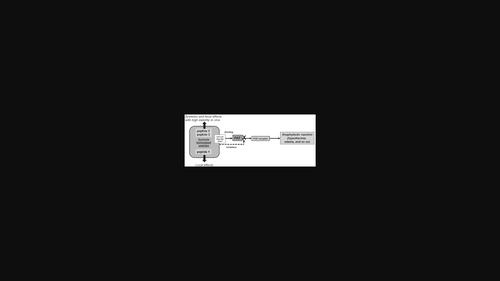当前位置:
X-MOL 学术
›
J. Pept. Sci.
›
论文详情
Our official English website, www.x-mol.net, welcomes your
feedback! (Note: you will need to create a separate account there.)
Biotinylated peptides substituted with D-amino acids with high stability as anti-anaphylactic agents targeting platelet-activating factor
Journal of Peptide Science ( IF 1.8 ) Pub Date : 2022-04-18 , DOI: 10.1002/psc.3412 Akira Sato 1, 2 , Takahiro Fukase 1 , Keiichi Ebina 1
Journal of Peptide Science ( IF 1.8 ) Pub Date : 2022-04-18 , DOI: 10.1002/psc.3412 Akira Sato 1, 2 , Takahiro Fukase 1 , Keiichi Ebina 1
Affiliation

|
Platelet-activating factor (PAF) is an important lipid mediator of anaphylaxis and therefore can be an anti-anaphylactic agent target. Recently, we reported that several synthetic biotinylated peptides containing a Tyr-Lys-Asp-Gly sequence markedly inhibited the bioactivities of PAF in vitro and in vivo; it also inhibited anaphylactic reactions such as hypothermia, hypotension, and vascular permeability in vivo. Here, we report the anti-anaphylactic effects of three biotinylated heptapeptides (peptide 1: H-Lys(biotinyl)-Trp-Tyr-Lys-Asp-Gly-Asp-OH, peptide 2: H-D-Lys(biotinyl)-Trp-Tyr-Lys-Asp-Gly-Asp-OH, and peptide 3: H-D-Lys(biotinyl)-Trp-Tyr-Lys-Asp-Gly-D-Asp-OH). The experiment using tryptophan fluorescence spectroscopy showed that the interaction of peptides 2 and 3 with PAF was larger than that of peptide 1. Experiments using a rat model of hind paw edema showed that peptides 1, 3, and 2 inhibited PAF-induced edema by 67.9%, 69.3%, and 79.3%, respectively. In a mouse model of anaphylaxis, both peptides 2 and 3 showed inhibitory effects on anaphylactic hypothermia, whereas peptide 1 did not. Furthermore, experiments involving in vitro rat plasma stability of peptides showed that both peptides 3 and 2 were more stable in plasma compared to peptide 1 (84.0%, 51.8%, and 0%, remained after 6 h, respectively). Our results suggest that both peptides 2 and 3 may show systemic and local inhibitory effects as anti-anaphylactic agents targeting PAF.
中文翻译:

D-氨基酸取代的生物素化肽作为靶向血小板活化因子的抗过敏剂具有高稳定性
血小板活化因子 (PAF) 是过敏反应的重要脂质介质,因此可以成为抗过敏药物的靶点。最近,我们报道了几种含有 Tyr-Lys-Asp-Gly 序列的合成生物素化肽在体外和体内显着抑制 PAF 的生物活性。它还在体内抑制过敏反应,例如体温过低、低血压和血管通透性。在这里,我们报告了三种生物素化七肽(肽1:H-Lys(生物素)-Trp-Tyr-Lys-Asp-Gly-Asp-OH,肽2:H - D -Lys (生物素)- Trp-Tyr-Lys-Asp-Gly-Asp-OH 和肽3:H - D -Lys(生物素)-Trp-Tyr-Lys-Asp-Gly- D-天冬氨酸-OH)。色氨酸荧光光谱实验表明肽2和3与PAF的相互作用大于肽1。使用大鼠后爪水肿模型的实验表明,肽1、3和2分别抑制了 67.9%、69.3% 和 79.3% 的 PAF 诱导的水肿。在过敏反应的小鼠模型中,肽2和3均显示出对过敏性低温的抑制作用,而肽1则没有。此外,涉及肽的体外大鼠血浆稳定性的实验表明,肽3和2与肽1相比,在血浆中更稳定(分别在 6 小时后保持 84.0%、51.8% 和 0%)。我们的研究结果表明,肽2和3作为靶向 PAF 的抗过敏剂可能表现出全身和局部抑制作用。
更新日期:2022-04-18
中文翻译:

D-氨基酸取代的生物素化肽作为靶向血小板活化因子的抗过敏剂具有高稳定性
血小板活化因子 (PAF) 是过敏反应的重要脂质介质,因此可以成为抗过敏药物的靶点。最近,我们报道了几种含有 Tyr-Lys-Asp-Gly 序列的合成生物素化肽在体外和体内显着抑制 PAF 的生物活性。它还在体内抑制过敏反应,例如体温过低、低血压和血管通透性。在这里,我们报告了三种生物素化七肽(肽1:H-Lys(生物素)-Trp-Tyr-Lys-Asp-Gly-Asp-OH,肽2:H - D -Lys (生物素)- Trp-Tyr-Lys-Asp-Gly-Asp-OH 和肽3:H - D -Lys(生物素)-Trp-Tyr-Lys-Asp-Gly- D-天冬氨酸-OH)。色氨酸荧光光谱实验表明肽2和3与PAF的相互作用大于肽1。使用大鼠后爪水肿模型的实验表明,肽1、3和2分别抑制了 67.9%、69.3% 和 79.3% 的 PAF 诱导的水肿。在过敏反应的小鼠模型中,肽2和3均显示出对过敏性低温的抑制作用,而肽1则没有。此外,涉及肽的体外大鼠血浆稳定性的实验表明,肽3和2与肽1相比,在血浆中更稳定(分别在 6 小时后保持 84.0%、51.8% 和 0%)。我们的研究结果表明,肽2和3作为靶向 PAF 的抗过敏剂可能表现出全身和局部抑制作用。











































 京公网安备 11010802027423号
京公网安备 11010802027423号